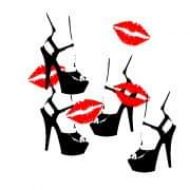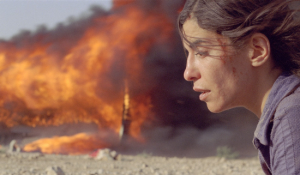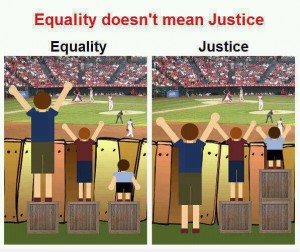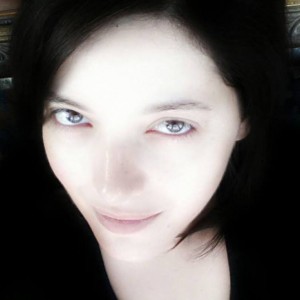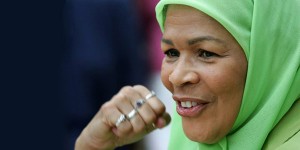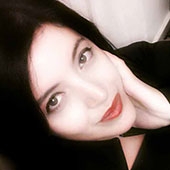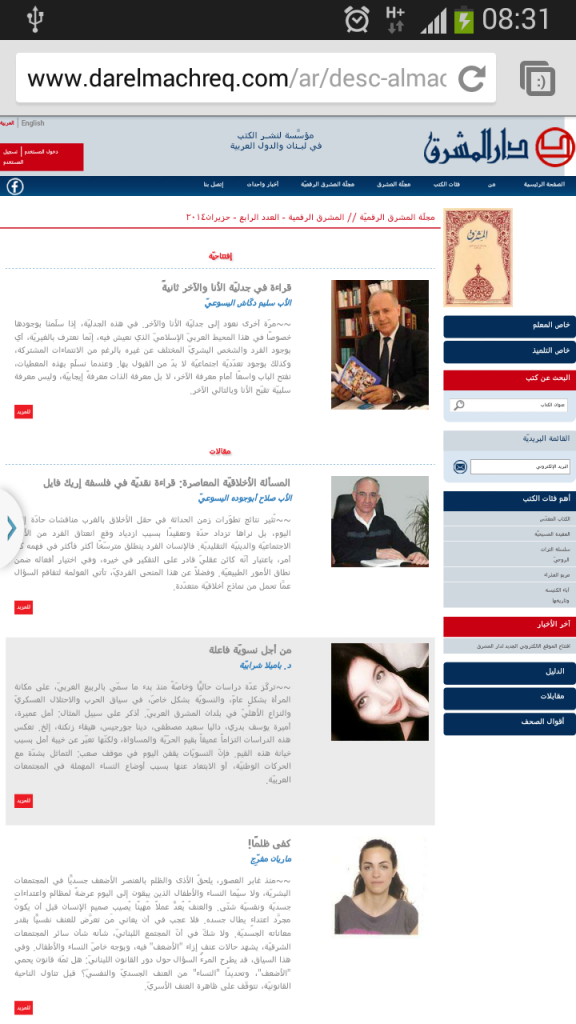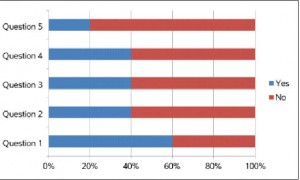The first step toward change is awareness. The second step is acceptance.
(Nathaniel Branden)
Following the analysis of several documents tackling the issue of war in the Middle East, a student of mine asked this morning: “How can there be Peace in this bloody chaotic no man’s land?”
This particular question settled in my mind many years ago. I answered it but also acted on the answer in the academic sphere: I started to develop a Peace Education approach that I called “Inter-Human Pedagogy” at the University of Montreal (2004-2006), then deepened and applied in my classrooms at St Josef University of Beirut, Notre Dame University and Holy Spirit University-USEK, targeting at least 3000 students over the course of several semesters since 2007.[1]
I can share here the following outcome: contrary to what some might say – those who are convinced that violence is the way to stop violence -, Peace can be if taught and learned.
1- On Peace Education in Lebanon:
Peace education brings together multiple traditions of pedagogy, theories of education, and international initiatives for the advancement of human development through learning. It is fundamentally dynamic, interdisciplinary, and multicultural and grows out of the work of educators such as John Dewey, Maria Montessori, Paulo Freire, Johan Galtung, Elise and Kenneth Boulding, and many others.
(http://www.un.org/cyberschoolbus/peace/frame.htm)
Peace Education in Lebanon is mainly promoted by non-governmental organizations, mostly interreligious groups – such as Adyan, Arab Group for Muslim-Christian Dialogue, Forum for Development, Dialogue and Culture (FDCD), Initiative of Change, Umam, IPRA, Mouvement social, Offre-Joie, etc.-, as well as artists, intellectuals and online activists. Many initiatives by civil society have contributed to promoting tolerance and Peace since the late 1990s, especially in the last nine years. Grassroots student dialogue clubs have flourished in a number of secondary schools. They conduct off-campus programs and learning projects, weekend workshops, artistic events, summer camps, and participation in virtual social platforms. All share common goals: increasing tolerance, deconstructing stereotypes, reducing prejudices, changing visions of self and other, building interreligious/inter-sectarian bridges, reinforcing a sense of collective identity, contributing to conflict resolution… International organizations are also involved in the Peacebuilding process. In particular, since the end of the 1990s, the United Nations Development Program (UNDP), the United Nations Country Team (UNCT) in Lebanon and the Arab Region Office of the Global Youth Network Association (GYAN) based in Beirut, have actively promoted measures for positive youth action.
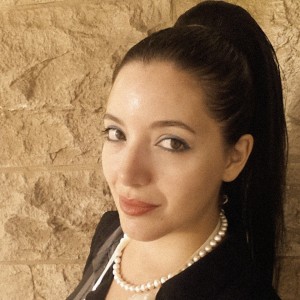
- Dr. Pamela Chrabieh
(Lebanon, 2014)
A survey of the national curricula shows that throughout the 20th century, authorities have viewed education as a potentially unifying force.[i] The official curricula launched after 1943 consistently articulate a desire to bring together the various confessional factions for a cohesive nation through civic education, but apparently with little success. According to Frayha[ii], the social studies curricula and textbooks have lacked an important theme in educating students about their society, that is about pluralism. In Rethinking Education for Social Cohesion (edited by Maha Shuayb),[iii] the authors of several chapters state that Lebanon placed considerable emphasis on developing a school education system geared towards promoting social cohesion and that the Taif Agreement (1989) proposed education as a major means for promoting social cohesion. Consequently, the main objective of the curriculum was to promote citizenship education and social cohesion. The agreement called for schooling that will socialize children into national unity within the framework of Lebanon’s Arab identity. The subsequent Plan for Educational Reform emphasized national integration through instruction of mandatory standardized history and civics in all schools. However, the sectarian communities opposed the plan. Consequently, a New Framework for Education in Lebanon was conceived with two broad aims: the development of individuals able to deal with others in a spirit of responsible, cooperative citizens who can build a cohesive Lebanese society, and who are willing to put the common good ahead of personal interests. The new curriculum was issued in 1997, but the new national history curriculum and textbook have not yet been approved, mainly because of the controversy surrounding the recent history. In Shuayb’s analyses, this curriculum was developed from an authoritarian approach neglecting humanitarian ideologies in citizenship education as it overemphasizes the role of the citizen rather than the development of the personality.
Schools now determine what history they teach and the concepts are often contradictory. My students often expressed their frustration knowing that what they were taught was unilateral and/or not accurate. There is fear among many historians and educators that because no consensus about a common version of the recent history has been reached and taught in schools, the new generations are doomed to repeat the past, with most of them learning history from their parents, sectarian political parties and media.
Educating to Peace in the university context is considered to be a rare phenomenon. Little attention has been paid so far to the integration of Peace programs in universities. They are considered to be low priorities, along with the rest of social studies and the Humanities. Many avoid giving too much attention and resources to Peace studies, Social Sciences and Humanities for fear that some of the programs may become politicized. More emphasis is placed on subjects seen to be tangible and having practical value for competition in the local, regional, and global marketplaces. The crowded curriculum leaves little room for new concepts to be addressed. There is a need for experts and trained teachers/professors to develop contextual Peace education knowledge and to adapt it in classrooms – both in schools and universities.
Some exceptions are noted however: St Josef University offers a Master’s degree in Muslim-Christian Relations. Other universities such as Balamand founded Centers for Dialogue. Al-Makassed – a single faith-based organization which owns a university with an Institute of Islamic Studies – offers courses in Christianity taught by Christian believers. It also organizes punctual gatherings between Christian and Muslim villages. Imam Sadr Foundation works on reconciliation through academic institutions (conferences, workshops) and through development projects to improve the living conditions of the underprivileged.
Nevertheless, Peace Education in universities faces many challenges: 1) there are prevailing misconceptions about the aims and nature of Peace education – noting here that in my ‘Theology of Dialogue’ classrooms, many students perceived dialogue and Peace to be ‘idealistic’ concepts and attitudes, and that Christians should focus on surviving and defending their faith and existence using other means, including ‘just violence’ 2) there is a diversity of definitions of Peace education in the country, and a diversity of implemented approaches – some focus on interfaith dialogue, others on the religions-politics separation; some promote intellectual elitist circles of dialogue, others general public gatherings, spiritual encounters, and dialogue of life…
2- My approach:
I define Peace as a complex process of multiple dynamics involving Peacemaking, Peacekeeping, Peacebuilding and certainly, creating Peace in our own hearts, often the last place many people ever find it. Studying Peace/ learning Peace and doing Peace therefore is as much about getting the bombs out of our minds as it is about getting them out of the jihadi groups and authoritarian regimes. It is about replacing these bombs with the messages of Jesus, Gandhi, Martin Luther King, Ibn Arabi, Gibran Khalil Gibran, Mother Theresa, and of many other pacifists with a nonviolence philosophy to live by, even if risky. It is about deconstructing stereotypes, wounded memories and healing traumas. It is about building a ‘living together’, beyond mere coexistence – a living together that certainly starts in schools and universities. Peter Kropotkin, the Russian pacifist, advised the young: “Think about the kind of world you want to live and work in. What do you need to build that world? Demand that your teachers teach you that!”
Peace is taught in my classrooms not as a philosophy of tree hugging, nor as Jainism portrays nonviolence – the abrupt and strictest possible ascetic life -, but as a way of thinking informed with knowledge of love – the love of humanity – and a way of doing that is not shy about activating confrontation when necessary (active resistance). A positive realistic approach to Peace, targeting both psychological and physical forms of war/violence and developing creative alternatives to passive or aggressive responses at different levels: within any individual, between individuals, within families, communities, neighbourhoods, cities, provinces, nations…
Peace practitioners and teachers cannot be expected to tackle all of these levels simultaneously and at all times, but certainly students are taught to be aware of the fact that Peace at one level cannot be sustained without Peace at another – for example, within the Civil Society and between heads of political parties – and that a ‘bottom-up’ adapted approach is much needed in a context such as the Lebanese one, where more concrete and effective results are to be gained. In that sense, students learn to discover the types of Peace actors – especially the local actors or ‘insiders’, even if actions undertaken by regional and international actors are often necessary – and the levels at which they should/could intervene – grassroots leadership. They also learn to discover a variety of sources of conflicts such as insecurity, poverty and social/economic inequalities, intra and inter-sectarian clashes, sectarianism, corruption, the continuity of wartime elite and the culture of impunity that protects them, opposing foreign policy orientations, foreign intervention and proxy battle-ground, etc. Nevertheless, the priority in classroom activities remains the psycho-social dimension of the conflicts, since it is an ideal dimension to assess the relevance of bottom-up approaches.[2]
3- Advantages:
Below is a summary of the results of a survey I conducted with 500 students assessing my approach:
70% learned to function in a dialogical environment, where a spirit of understanding and togetherness, and a better mutual listening, allowed them to gain self-confidence and new skills to interact with different people.
According to 25% of students, changes occurred mainly in attitudes, values and patterns of behaviour, which not only take time to transform but are also elusive and difficult to measure – needless to say that the courses do not result in a change in every student. I often encounter students who continue to believe that their worldview is the ‘right one’ and refuse the possibility of dialogue!
The 25% of students who experienced real change kept in touch with me via online platforms, and became activists for Peace and human rights – either individually or in groups. Often, these students send me messages where they relate what they have learned in my classrooms with their current social engagement. One of them called my approach ‘a pedagogy of engagement’: ‘We did not only learn about war and Peace, but we did Peace. We engaged in acts of civic responsibility in the classrooms and following the courses’. The enthusiasm shown by these students contradicts what has frequently been said about the general disenchantment of young people in Lebanon with politics and social activism. Certainly, there are those who apply the ostrich attitude, and those who follow sectarian-political agendas while hating each other, but there are also those who are looking for the adventure of Peace.
4- Limits and Future Perspectives:
Peace Education is being applied on a small scale. It needs to expand in all universities, as well as in schools. There are many conditions to pursue this expansion, such as support from private institutions and public authorities, sustained interaction between students and their teachers, interdependence in carrying out common tasks, etc. In the context of both formal and non-formal education, funding for projects and their sustainability are two major challenges. Only the elite schools and universities can offer sufficiently long training and the very important follow-up. Peace education ought to be considered a public good and as such should be offered as a free service to all.
Inequalities and discrimination constitute a major challenge. They do not disappear when the classroom doors close or when they open again. Students may continue pursuing opposing agendas, especially when they have unsupportive home environments. Even when they are equipped with a new way of perceiving themselves and the ‘others’, they enter into a collision course with their social surroundings holding ‘unquestionable truths’: home, neighborhood, sectarian communities, political parties and the media.
Furthermore, in a context of continuous war – physical and psychological -, and in a general atmosphere of hostility, especially when contradictory and mutually exclusive narratives exist, mirroring each other and delegitimizing each other’s goals, history, humanity and sufferings, Peace education approaches are hard to disseminate. The chances for success may be very slim where the traditional media, politicians, and even the national educational system convey a mood of suspicion and animosity toward the ‘other’. For Peace education to be highly effective, the objectives and content must be agreed upon on a national level. It cannot remain a socially isolated affair. A culture of Peace is needed on large scale.
Furthermore, because of the bloated, inefficient, and corrupt public education system in Lebanon, there are presently not enough teachers and professors that are equipped to use Peace education approaches in the classroom. Their generation also suffers from the effects of the war, and thus many might hold negative views of others, and have distorted views of the war. Furthermore, professors must ensure that the classroom is a safe space where students can express themselves freely without fear of reprisal, but also where students respect others. When students share their narratives with others, there is a risk other students who feel targeted might be offended, and this would create a hostile environment. The educator must be skilled enough to prevent this and other explosive situations from happening. Hence, training programs and recruitment must take place, and it is unlikely there would be enough political will and public funds to make it happen in the near future.
[1] The results of a qualitative/quantitative study I conducted in order to assess my approach were presented at Oxford (2010) and Balamand (2014) universities.
[2] For more information about my ‘Inter-Human Pedagogy’, please refer to the published proceedings of Balamand’s Conference (March 2014).
[i] Irma-Kaarina Ghosn . The quest for national unity: rhetoric and reality of School Curricula in Lebanon. In IKirylo, J. & Nauman, A. (Eds.). Curriculum Development: Perspectives from around the World. 2010. Chicago: Association for Childhood Education International.
[ii] Frayha, N. Religious Conflict and the Role of Social Studies for Citizenship Education in the Lebanese Schools between 1920 and 1983. Unpublished doctoral dissertation. 1985. California: Stanford University, pp. 349-350.
[iii] Maha Shuayb (ed.). Rethinking Education for Social Cohesion. International Case Studies. 2012. Hampshire: Palgrave Macmillan Ltd.
